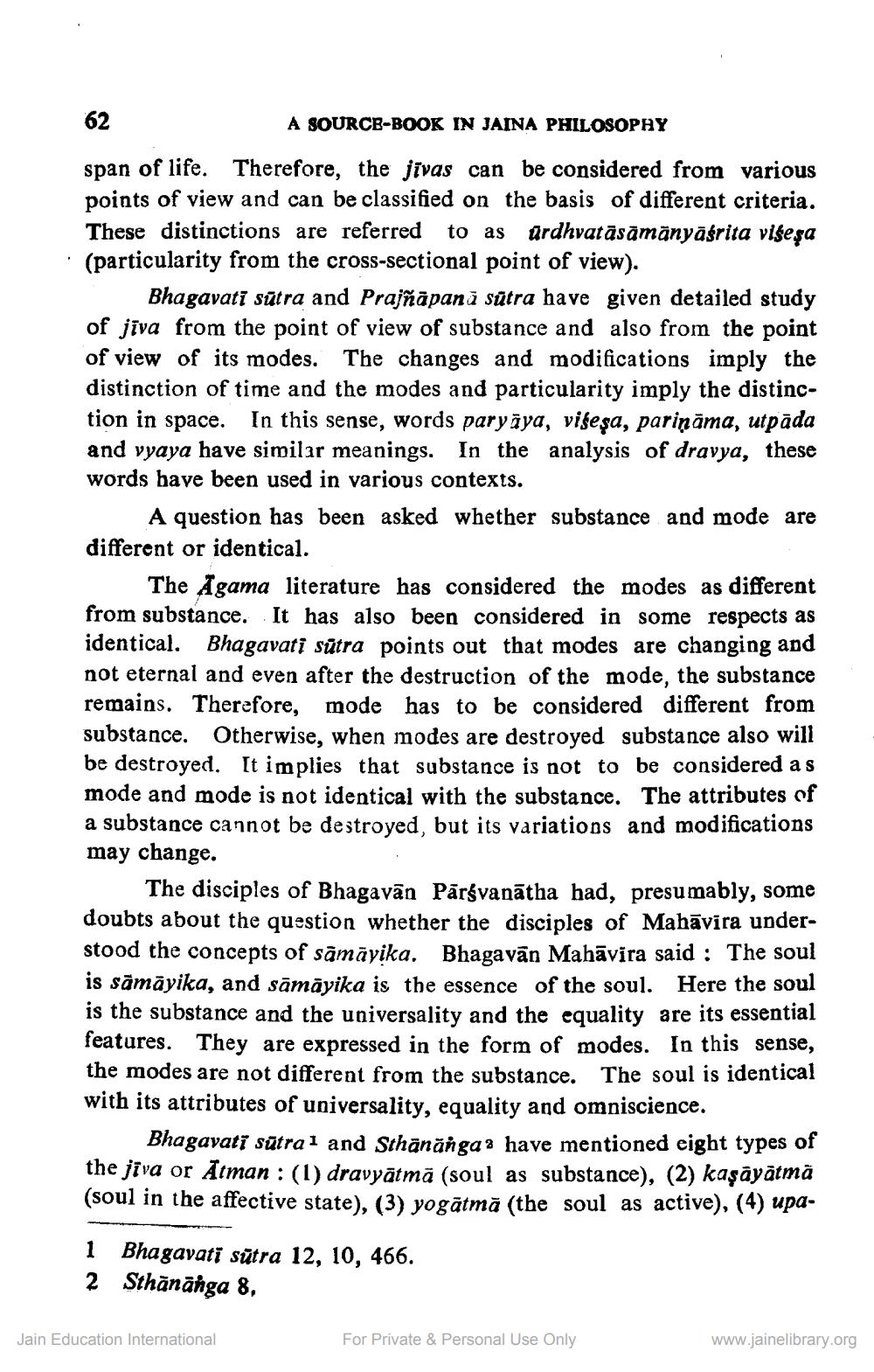________________
62
A SOURCE-BOOK IN JAINA PHILOSOPHY
span of life. Therefore, the jīvas can be considered from various points of view and can be classified on the basis of different criteria. These distinctions are referred to as urdhvatāsāmānyāśrita viseşa (particularity from the cross-sectional point of view).
Bhagavati sūtra and Prajñāpanā sūtra have given detailed study of jiva from the point of view of substance and also from the point of view of its modes. The changes and modifications imply the distinction of time and the modes and particularity imply the distinction in space. In this sense, words paryaya, viseşa, pariņāma, utpāda and vyaya have similar meanings. In the analysis of dravya, these words have been used in various contexts.
A question has been asked whether substance and mode are different or identical.
The Agama literature has considered the modes as different from substance. It has also been considered in some respects as identical. Bhagavati sūtra points out that modes are changing and not eternal and even after the destruction of the mode, the substance remains. Therefore, mode has to be considered different from substance. Otherwise, when modes are destroyed substance also will be destroyed. It implies that substance is not to be considered a s mode and mode is not identical with the substance. The attributes of a substance cannot be destroyed, but its variations and modifications may change.
The disciples of Bhagavan Parśvanatha had, presumably, some doubts about the question whether the disciples of Mahavira understood the concepts of sāmāyika. Bhagavan Mahāvīra said: The soul is sāmāyika, and sāmāyika is the essence of the soul. Here the soul is the substance and the universality and the equality are its essential features. They are expressed in the form of modes. In this sense, the modes are not different from the substance. The soul is identical with its attributes of universality, equality and omniscience.
Bhagavati sūtra1 and Sthānāngaa have mentioned eight types of the jiva or Atman : (1) dravyātmā (soul as substance), (2) kaṣāyātmā (soul in the affective state), (3) yogātmā (the soul as active), (4) upa
1 Bhagavati sutra 12, 10, 466.
2 Sthānānga 8,
Jain Education International
For Private & Personal Use Only
www.jainelibrary.org




